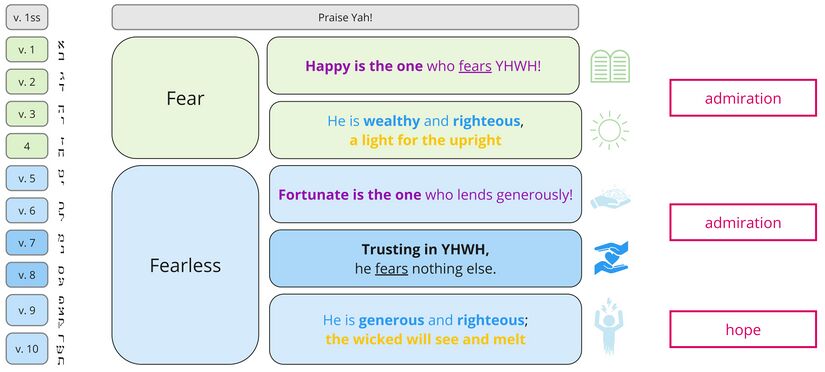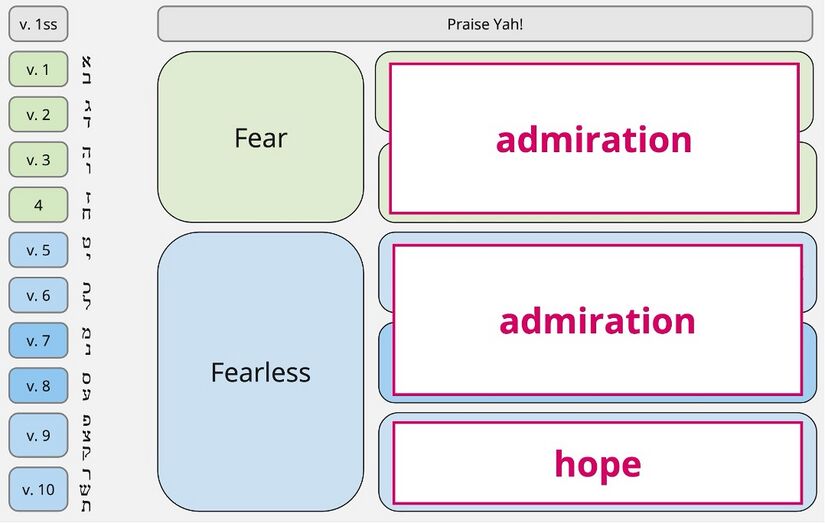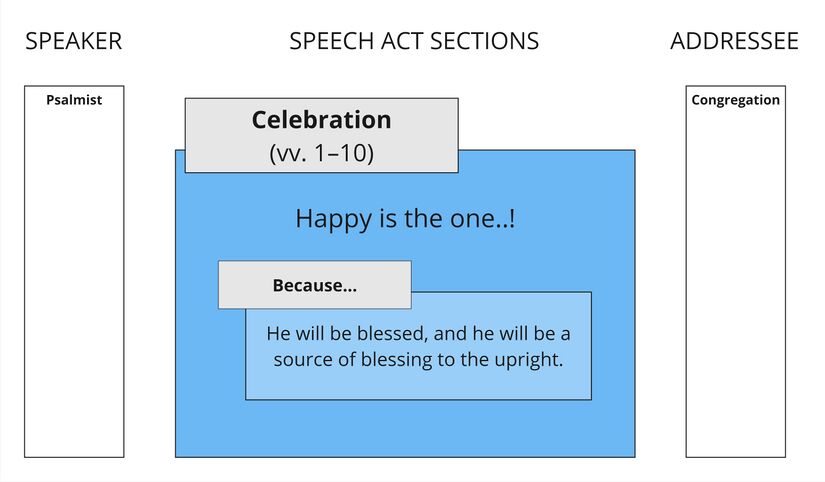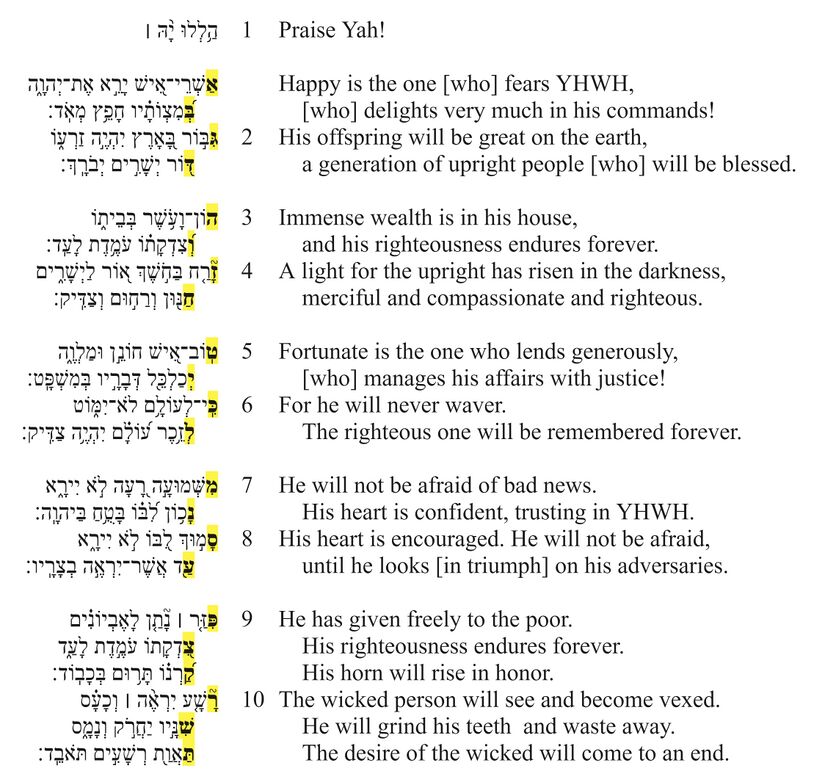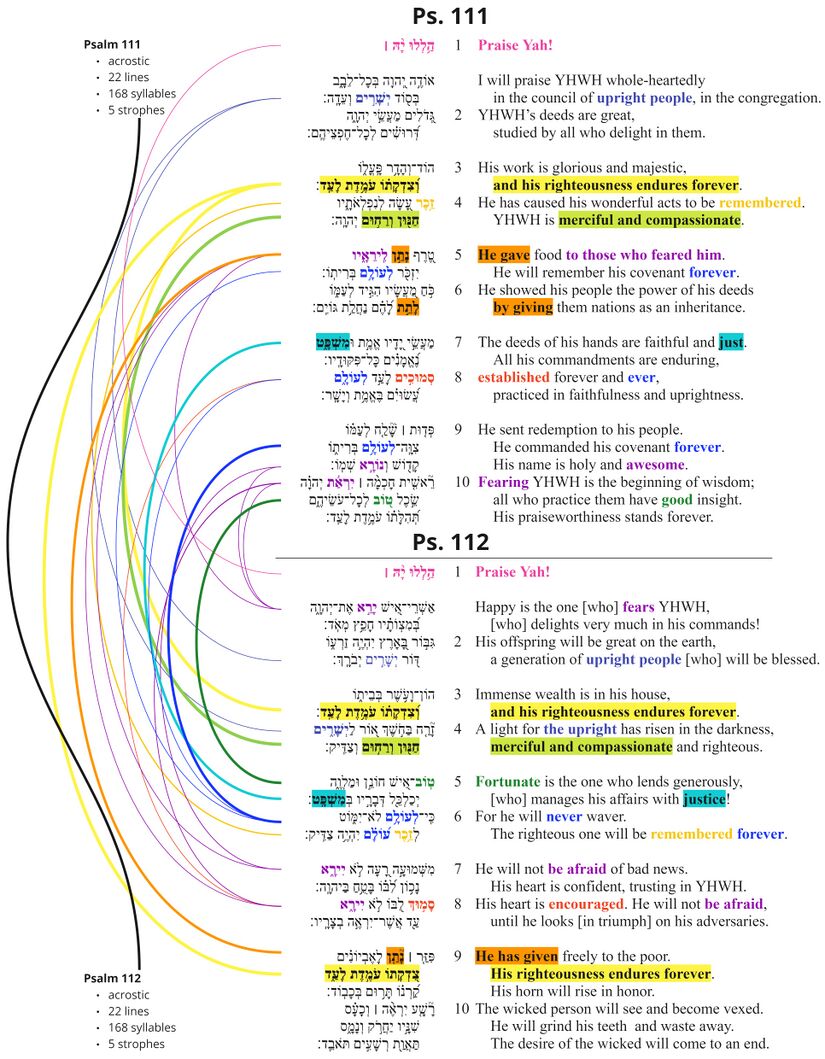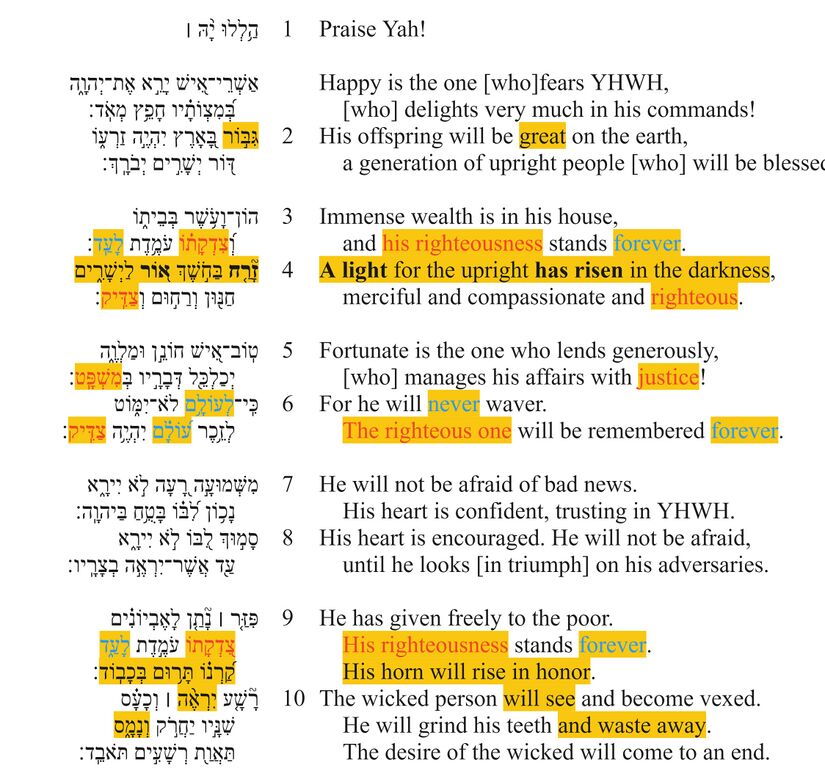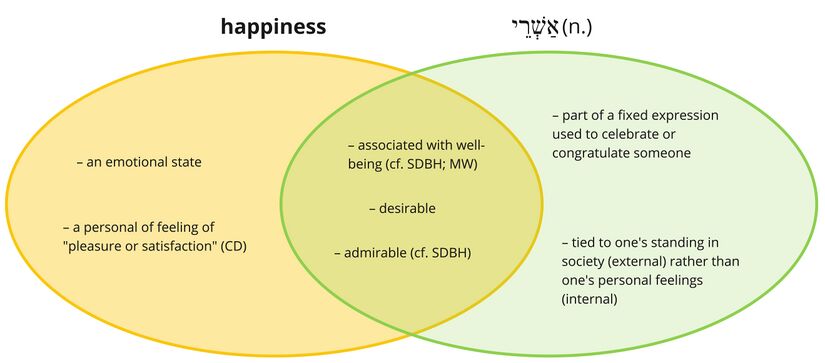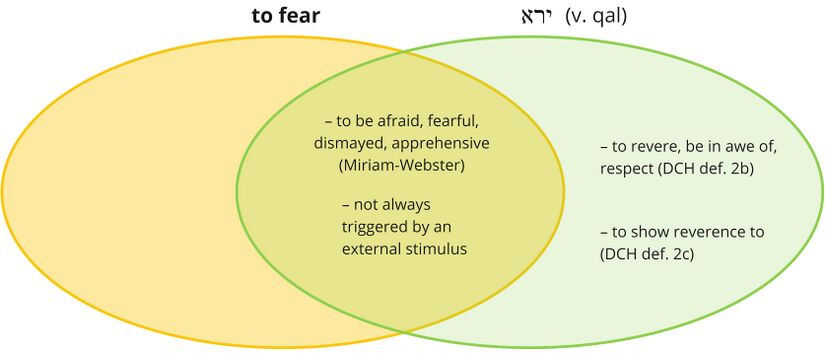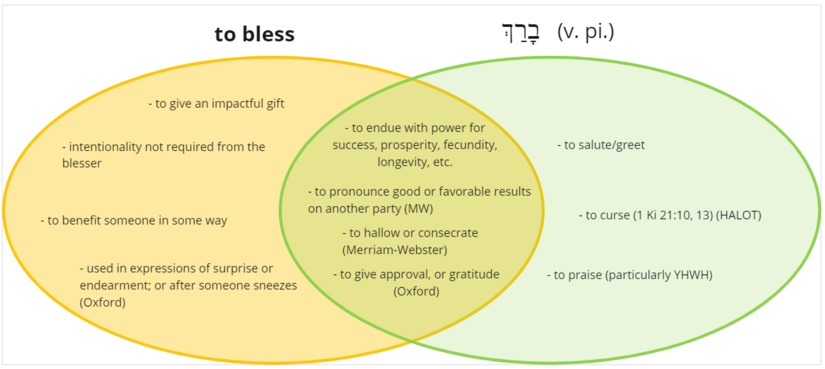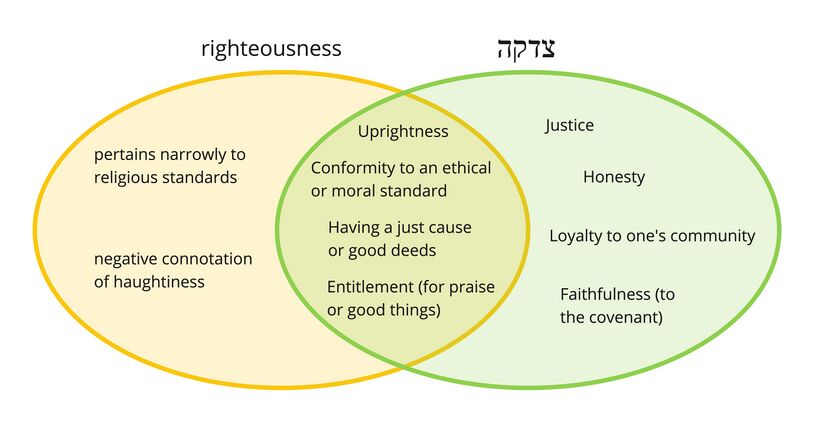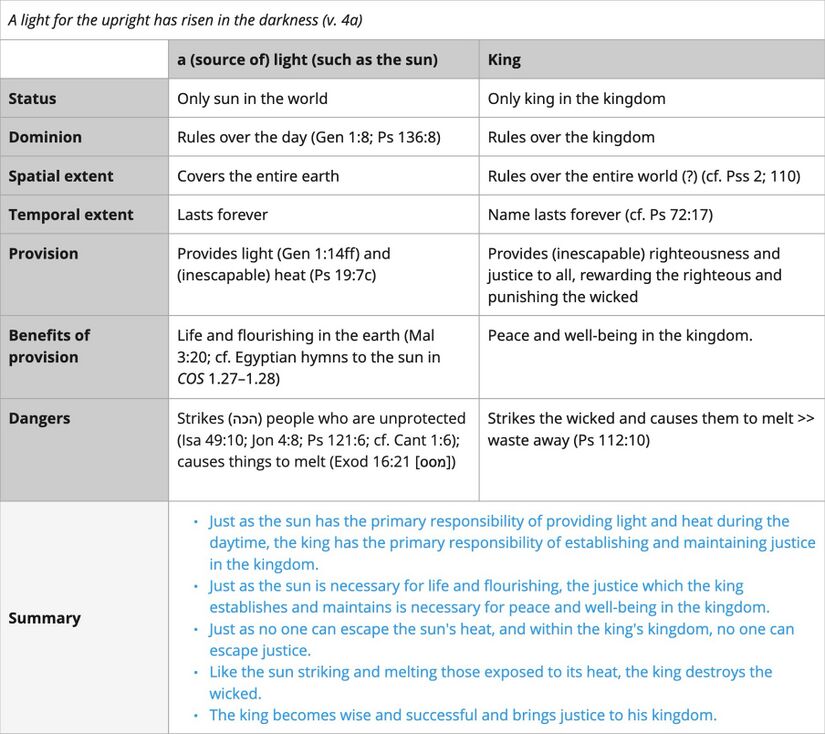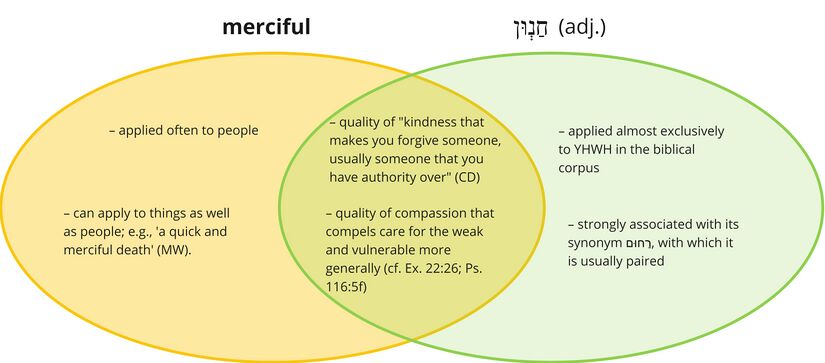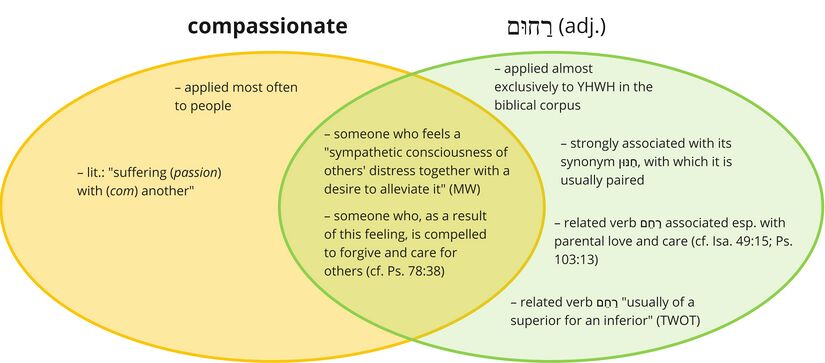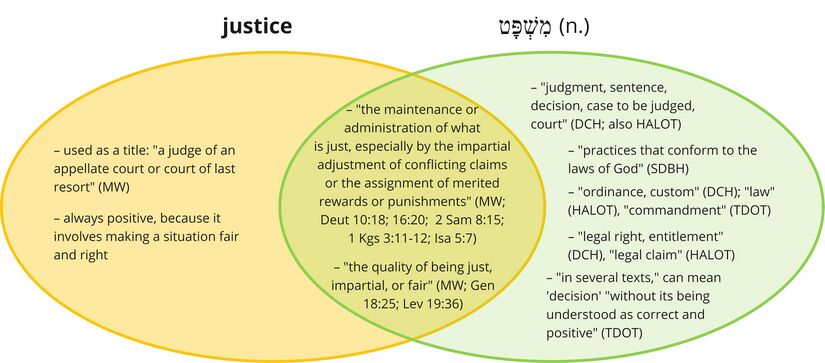Psalm 112 Translation
Jump to: Overview Verse-by-Verse
General Translation Tips
To translate poetry accurately and beautifully, a knowledge of both the source language's poetry and the target language's poetry is needed. So, here are the steps we recommend to follow when setting out to translate this or any psalm:
- Gain an Understanding of the Target Language’s Poetry/Arts. Research and analyze many examples from numerous genres of poetry, storytelling, and music in the target language and culture, and document findings. See our Local Arts Analysis Guide for help.
- Gain an Understanding of the Source Language’s (Hebrew) Meaning and Poetry. The aim of all our materials is to provide exactly this for the translator, poet/musician/artist, and consultant: an understanding of what the psalm means, as well as its poetics.
- Translate the Psalm in the Appropriate Local Art/Poetry Genre(s).
- Test the Translation with the Language Community. Seek feedback about both word choices and the form/genre/media of translation.
Overview: Psalm 112 as a Whole
These are the elements that we believe are most helpful to keep in mind during both drafting and checking translations, to help verify that the translation or performance is accurate beyond just a word- or verse-level; just as important is accuracy on the level of a whole. Additionally, these are elements that will guide decisions about performance in oral translations, songs, poems, or other kinds of art based on this psalm.
The following gives a basic Overview of the Psalm, answering the following questions:
- Title-what title best describes this unique psalm?
- "The one who fears YHWH"
- Purpose–why was this psalm written?
- To celebrate the one who fears YHWH
- Content–In summary, what is said in this psalm?
- Happy is the one who fears YHWH! He will be blessed, and he will be a blessing to others.
- Message–what is the general theme of this psalm? What seems to be the main point the psalmist wanted his audience to realize by hearing this psalm?
- The one who fears YHWH becomes like YHWH, blessing those around him.
Every psalm has a coherent story behind it. However, many psalms are not written in typical "story" format, with a clear beginning, middle, and end. Here, we attempt to understand the story and background that prompted the psalmist to write.
- Story Behind-How do the various parts of the psalm fit together into a single, coherent story? What is the main message/theme conveyed by this "story behind"?
- A son of David inherits the throne. He studies YHWH's law and learns to fear YHWH. He becomes wise and successful, and he rules with justice. So, the psalmist looks forward to a time when upright people are blessed, wicked people are punished, and upright people imitate the son of David's example of fearing YHWH.
- Background Situation-what are the series of events leading up to the time in which the psalm was written?
Knowing the layout of the psalm by sections helps us to understand the progression of thought as the poem progresses.
How to read the visual below: The picture below shows the main “chunks” or pieces of the poem. Verse numbers appear on the left. The second column has a title for each section. The large third column contains a brief summary of the section’s content. As you read through the content column, you will see important words and ideas highlighted in similar colors. The icons on the right may be used as memory aids.
Progression–what is the flow of thought as the poem progresses?
- The psalmist begins by celebrating how YHWH blesses the one who fears YHWH and delights in YHWH's commands. Among other things, this person has great offspring, he is wealthy, he is righteous, and he is a light for the upright. Then, the psalmist describes how the person who fears YHWH is fearless in the face of bad news and opposition. This person lends generously, he trusts firmly in YHWH and fears nothing else, and the wicked who oppose him will melt away.
Part of poetry is communicating emotion. Each section, and even each verse, can contain a number of different emotions. Here are the main emotional themes of each section:
In poetry, it is important to keep track of who is speaking, who is the audience, and what it is that the speaker is trying to do with his words.
In the chart below, the left-hand column identifies the speaker, who is the psalmist. The right-hand column identifies the audience, who is the congregation. The middle column tells what the speaker is trying to do with his words (his speech acts) in each section.
In this section, we ask, "what kinds of artistic beauty did the psalmist incorporate into the poem to reinforce its message?" (See Poetic Features video and layer for more details.)
Poetic Feature 1: A to Z Celebration
Psalm 112 is an acrostic poem. In acrostic poems, each line begins with a successive letter of the Hebrew alphabet (Psalm 111, which has several correspondences to this psalm, is also an acrostic poem).
The alphabet is a symbol of completeness.[1] In an acrostic poem, the poet takes a topic and explains it carefully and completely, from every possible angle. The purpose is that the reader would gain a thorough, detailed understanding of the topic, so that he or she understands it “from A to Z.” In Psalm 112, the topic is "the man who fears YHWH" (verse 1a).
Poetic Feature 2: The Imitation of God
Psalm 112 is closely related to Psalm 111 .
In terms of structure, the two psalms are nearly identical. Each psalm is an acrostic, which means that each line begins with a successive letter of the Hebrew alphabet. Both psalms are 22 lines and have identical superscriptions.
The two psalms also share many similar phrases and words. Many times, what is said about YHWH in Psalm 111 is said about the man in Psalm 112 (see highlighted text and thick connecting lines).
The man in Psalm 112 is described in terms that are especially (and, in some cases, uniquely) appropriate to YHWH. Like YHWH, the man "gives" generously (111:5/112:9) and carries out his work in "justice" (111:7/112:5). Like YHWH, he is "merciful and compassionate" (111:4/112:4), and "his righteousness stands forever" (111:3/112:3, 9).
In other words, the person who fears YHWH and follows his commands becomes like YHWH in terms of his character.
This parallel description of YHWH and the man is perhaps more understandable (though still striking) if the man in Psalm 112 is a king (see this exegetical issue for more detail). In Israel, as in the wider Ancient Near East, the king was both the image of God and the son of God (see Psalm 2), and, as such, he was expected to resemble the character of his God.
The blurring of YHWH and the king occurs elsewhere in the psalms (for example, in Psalms 2, 45, and 110). It is perhaps significant that the pair Psalms 111–112 follows Psalm 110, in which it is difficult to distinguish the king's activity from YHWH's activity (see the poetic feature "The Lord and the lord" for Ps. 110).
It is also important to consider how the author chose to draw attention to certain parts of the psalm. Here are the parts of the psalm that we believe are most prominent, and thus should be most prominent in a performance of the psalm.
Like the Sun
Throughout Psalm 112, the one who fears YHWH is compared to the sun:
- he is described as a light which has "risen (זרח) in the darkness" (verse 4). The subject of the verb זרח (in the sense of "dawn") is almost always the sun.[2]
- he causes the wicked to waste away, or more literally, to melt (מסס, verse 10c) which is something that the sun can also cause to happen (see Exodus 16:21).
- his horn rises (verse 9c) and horns in the OT are sometimes "a symbol for radiance."[3]
- he has honor/glory (כָבֽוֹד, verse 9c) which is associated with the sun.[4]
- he is characterized many times with the Hebrew root righteous (צדק),[5] and this word is often associated with the sun.[6]
- his impact is forever (verses 3, 6, 9), and in Ps 89:37, the king's dynasty is compared to the sun in the sense that it lasts forever.
The application of solar imagery to the man strengthens the association between the man and YHWH (see Poetic Feature 2), since YHWH is often compared to the sun in the OT.[7]
It also strengthens the identification of the man as a king, since kings were often compared to the sun in the OT.[8] In this psalm:
- just as the sun has the primary responsibility of providing light and heat during the daytime, so the king has the primary responsibility of establishing and maintaining justice in the kingdom.
- Just as the light and heat of the sun are the preconditions for life and flourishing on the earth, so the justice which the king establishes and maintains is the precondition for peace and well-being in the kingdom.
Verse-by-Verse Notes (Translation)
View Text
Contents
Verses 1-2
- The first subsection begins and ends with words from the same area of meaning: praising/blessing.[9]
- The first word is happy (אַשְׁרֵי)
- The last word is blessed (יְבֹרָךְ)
- These two words are sometimes even used as synonyms.
v. 1
| 1a | הַ֥לְלוּ יָ֨הּ ׀
|
Praise Yah!
|
| 1b | אַשְׁרֵי־אִ֭ישׁ יָרֵ֣א אֶת־יְהוָ֑ה
|
Happy is the one [who] fears YHWH,
|
| 1c | בְּ֝מִצְוֺתָ֗יו חָפֵ֥ץ מְאֹֽד׃
|
[who] delights very much in his commands!
|
Expanded Paraphrase The words in <i>italics</i> provide a fuller sense of the psalm; the text itself is in <b>bold</b>.
Notes
- The first line of this verse, praise Yah, is the superscription of Psalm 112. Superscriptions can identify the psalmist, the instruments, the tune, the setting, and other information.
- We know that this line is a superscription because it does not fit in the acrostic structure of the rest of the psalm (see the Poetic Feature YHWH's Deeds from A to Z for more information).
- The word Praise is in the imperative plural form, but it functions less as a command and more as an exclamation of praise - just like Christians today say "Praise God!" to express praise.
- Yah is a shortened form of the proper name YHWH.
- Most English translations convey the meaning of the phrase by rendering it Praise the Lord! (ESV, NASB, NLT, etc.), but the CSB transliterates the phrase with the rendering Hallelujah!
- In many cultures, special words whose meanings are not immediately clear can take on the role of incantations, that is, words with magical properties. In Africa, for example, this is often a problem with transliterated words like hallelujah and amen. For this reason, we recommend a translation that brings out the meaning of the phrase, such as the Hausa CSB: Praise YHWH![10] or the French NBS: Praise the LORD (Yah)![11]
- The phrase happy is the one (אַשְׁרֵי אִישׁ, verse 1a) captures the purpose of the psalm. This purpose is to celebrate the person who fears YHWH. The phrase is echoed halfway through the psalm in the words 'fortunate is the one' (טוֹב אִישׁ, verse 5a). Everything outside of verses 1 and 5 is explaining why the happy and fortunate person is to be celebrated.
- The phrase 'happy is the one' (אַשְׁרֵי אִישׁ) is an almost-exact match with the first two words of Psalm 1.[12] Strikingly, the last two Hebrew words of Psalm 112 (רְשָׁעִ֣ים תֹּאבֵֽד: 'the wicked will come to an end') are an exact match with the last two words of Psalm 1. Thus, Psalm 1 and Psalm 112 begin and end in the same way.[13] Translators should therefore seek to match closely the beginning and ending phrases of Psalm 112 with those of Psalm 1.
- The word happy means the same thing as the Greek word makarios (μακάριος) which Jesus used many times in the Beatitudes.[14] Translators should harmonize the word here with that word that begins each verse of Matthew 5:3-11.
- Despite its appearance in most translations, the phrase happy is the one is not a complete sentence. It is also not a claim that God will bless or reward someone who behaves well.[15] Rather, it is an exclamation of admiration for someone who makes good choices.
- English has no expression that quite matches the phrase happy is the one. It is an exclamation that is similar to, but not exactly the same as, congratulations![16] The French PDV translation of Psalm 1 correctly renders it as an exclamation, Here is the happy man![17]
- The translator should search for a similar expression in the local language. Bratcher and Reyburn point out that some languages may require a shift to the second person in order to convey congratulations; for example: How happy you are or What great happiness is yours. Also, they note that "In some languages the congratulation may be expressed more naturally at the end of the verse rather than at the beginning."[18] So, the verse might be rendered something like The one who fears YHWH, and who delights very much in his commands, is the happy one! The word order selected should match closely the translation of Psalm 1:1 in the target language.
- As the first words of the psalm, the phrase happy is the one (אַשְׁרֵי אִישׁ) sets the emotional tone for the psalm - but the emotion is not happiness as our rendering might suggest. Instead of the focus being on the person's internal feelings, the use of the Hebrew word happy (אַשְׁרֵי) is a feeling of admiration by others for the person. The key term happy (אַשְׁרֵי) has several features to consider:
- People would declare someone happy (אַשְׁרֵי) whose position in life was admirable or desirable. ʾPossible alternatives include commendable, favored, or blessed. The meaning of the word chosen in the receptor language may be less important than the function of the phrase to express admiration and celebration.
- The word 'happy' is never used to describe God, only people.
- Translators should try to avoid a word that includes the idea of lucky, as if the person’s success is just by chance.[19]
- The diagram below shows how the Hebrew word compares with our modern English idea of happy. The wording in the center shows the similarities between the two.
- Psalm 112 is an acrostic poem, in which every line begins with a successive letter of the Hebrew alphabet. The word happy (אַשְׁרֵי), which begins with the first letter of the Hebrew alphabet, begins the acrostic. For more detail, see YHWH's Deeds from A to Z.
- There are clues that the one (אִ֗ישׁ) is a royal figure, such as a king.[20] At the same time, this psalm was probably written so that its words could apply to everyone. So, while translators should leave open the possibility that the person could have been a king when creating a performance of the psalm, they should use a more general term when translating.
- When translating, choosing a word that is both gender neutral (such as the one or the person instead of the man) and singular (such as the one instead of those) allows for a royal interpretation as well as a universal application.[21]
- Translations that use a plural noun ("happy are those") have the advantage of being clearly applicable to both males and females, but they do not allow for any understanding of the one as a unique individual (which leaves open the royal interpretation). So, translations like the NLT, joyful are those, are dispreferred.
- The verbs fears (יָרֵא) in Hebrew means more than feeling the negative emotion of being afraid of something dangerous. Here, it also refers to positive emotions, inspiring reverence, awe, and respect. This positive sense is important for performances of the psalm.
- Notice that the word fear is surrounded in this verse on either side by very positive emotions: happy and delights. This suggests that the word fear here is not meant primarily in its negative sense.
- The French NFC renders it recognizes the authority of[22] and the French PDV says respects.[23] Both of these are closer than obeys (NET) since the Hebrew word expresses the motivation for obedience, but not obedience itself.
- The following diagram compares the English word fear with the Hebrew root:
- YHWH is God’s proper name (as opposed to a title such as lord), which he commanded his people to call him in Exodus 3:15. For more guidance about how to translate this name, see the forthcoming “Names/Titles of God” document.
- Practically speaking, someone who 'fears YHWH' obeys YHWH's commandments. As the psalmist explains it, the person who fears YHWH delights very much in his commands.
- The pronounhis refers to YHWH.
- For languages that require a verbal idea for the word commands, possible strategies are: delights to to obey what God has commanded to do or when he obeys what God has commanded, it gives him delight.
- In some cultures, the idea of delighting in commands may not make sense. One strategy is to make it clear that what the person delights in is obeying the commands:
- delight in obeying his commands (NLT)
- take pleasure in obeying his commands (GNB)
- finds deep delight in obeying his commandments (REB)
- takes great delight in keeping his commandments (NET)
- Just as the one delights in YHWH's commands in Psalm 112, so too the one delights in YHWH's instruction in Psalm 1:2.
v. 2
| 2a | גִּבּ֣וֹר בָּ֭אָרֶץ יִהְיֶ֣ה זַרְע֑וֹ
|
His offspring will be great on the earth,
|
| 2b | דּ֭וֹר יְשָׁרִ֣ים יְבֹרָֽךְ׃
|
a generation of upright people [who] will be blessed.
|
Expanded Paraphrase The words in <i>italics</i> provide a fuller sense of the psalm; the text itself is in <b>bold</b>.
Notes
- The pronoun his at the beginning of this verse refers to the one (verse 1), which is different from the previous clause, where it referred to YHWH.
- The Hebrew word we have rendered as offspring (זֶ֫רַע) literally means seed, which is a singular noun that has a collective (plural) meaning. Many English translations render it descendants (NASB, CSB, REB, NET, NRSV), which fits the meaning well. Other translations say children (NIV, GNB, NLT), but multiple generations are probably in view, not just a single generation like the gloss children would indicate.[24]
- It is not clear whether the Hebrew word we have translated great (גִּבּוֹר) is a noun (meaning great ones) or an adjective (meaning great).
- In either case, the word describes "a human being... who is renowned for his characteristics, such as physical strength, power, bravery, skill, wealth, good character, or a combination thereof."[25] Its basic gloss is warrior or mighty.[26] Many English translations render it as mighty (ESV, NASB, NIV, NRSV) or powerful (CSB, GNB, REB, NET). Some French translations render it valiant.[27]
- The word is associated with kingship and is often applied to kings.[28] The full phrase great on the earth (גִּבּוֹר בָּאָרֶץ) occurs only elsewhere in Gen 10:8//1 Chr 1:10, where it describes Nimrod, who, though he is not called a king (מֶלֶךְ) is said to have had a kingdom (מַמְלָכָה). Thus, the use of גִּבּוֹר in Psalm 112 is one indication that the one in this psalm, along with his children, are associated with royalty.[29]
- Many English translations read the word we have translated the earth (הָאֶרֶץ) as referring narrowly to the land (of Israel). These include ESV, NIV, CSB, GNB, REB, and NRSV. If, however, the man is a king with international significance, then the word might refer more broadly to the earth, as it does in Gen 10:8 and Ps 89:28. We prefer rendering it the earth, as the NASB and NET do.
- The Hebrew word we have rendered upright people means "a person whose behavior is morally and ethically right."[30] The Hebrew word itself is an adjective, and most English translations render it as the upright (ESV, NASB, NIV, CSB, NRSV), but here it refers to people, and translators should make this clear. The NET has the godly, but translators should be careful when using such terms, because in some languages the word godly may connote that the people are somehow themselves gods. God-fearing would be closer. The Hausa CSB renders this phrase honest people at heart.[31]
- The relationship between the two lines of this verse is not immediately clear. In Hebrew, it literally says His offspring will be great on the earth, a generation of upright people will be blessed.
- In this verse, it is likely that his offspring will be is tied to both parts of this verse, so that:
- His offspring will be great on the earth
- His offspring will be a generation of upright people [who] will be blessed.[32]
- This interpretation is likely for two reasons:
- Biblical Hebrew poetry tends to communicate one thought through two lines.[33]
- The words offspring and generation are a poetic word-pair and probably refer to the same group of people. However, they have two distinct definitions, and translators should attempt to retain their unique meanings if possible:
- In this verse, it is likely that his offspring will be is tied to both parts of this verse, so that:
- The first word, offspring, may be defined as "a person’s child or children."[34]
- The second word, generation, refers to "all of the people born and living at about the same time."[35]
- For a detailed discussion, see The Syntax of Psalm 112:2b.
- The word translated will be blessed (יְבֹרָךְ) refers to a "causative action by which deities grant a special favor to humans."[36]
- In some languages and cultures, the word 'blessed' refers to a spoken word that is pronounced upon someone. Here, however, the word is more broad in meaning, referring to the good things that YHWH will give.
- The verb is in the passive voice in Hebrew. Languages that are unable to render the passive voice may change it to an active sense, as in a generation of upright people whom YHWH will bless.
- For languages that have multiple ways to express the future (for example: immediate, remote, and far remote), context suggests that the verb refers to a remote situation, in which the time gap between the speaker and the event of blessing is at least a generation.
- The following diagram shows the similarities and differences between the English verb 'bless' and the Hebrew word. The section on the left (in yellow) contains definitions that only apply to the English sense of the word. The section on the left (in green) contains definitions that only apply to the Hebrew sense of the word. The overlapping section in the middle contains definitions that the two languages share:
Verses 3-4
- The second unit is bound by the repetition of the Hebrew root that means righteous/righteousness (צדק).
v. 3
| 3a | הוֹן־וָעֹ֥שֶׁר בְּבֵית֑וֹ
|
Immense wealth is in his house,
|
| 3b | וְ֝צִדְקָת֗וֹ עֹמֶ֥דֶת לָעַֽד׃
|
and his righteousness endures forever.
|
Expanded Paraphrase The words in <i>italics</i> provide a fuller sense of the psalm; the text itself is in <b>bold</b>.
Notes
- The phrase translated immense wealth (הוֹן־וָעֹשֶׁר) is a combination of two nouns (wealth and riches) that refer to the same thing. The use of two nouns that refer to the same thing (instead of one noun) stresses the immensity of the man's wealth. The ideal king in Ps 112 is thus depicted, like Solomon, as having immense wealth.[37]
- The immense wealth is material, financial wealth.
- Most English translations render the phrase as wealth and riches (ESV, KJV, NASB, NIV, CSB, LEB, NRSV), and this is an acceptable rendering.
- The pronoun his (in both lines of this verse) refers to the one/the king.
- The second line of this verse, His righteousnessendures forever, is exactly the same as Psalm 111:3b. So translators should match these two lines when translating these psalms (except for the wordand). In Psalm 111, the line described the unique character of YHWH, but here it describes the one. This is another connection the psalmist makes between YHWH in Psalm 111 and the one in Psalm 112 (see Poetic Feature 2 for more details).
- The second line describes the king's righteousness (צִדְקָתוֹ). The king was responsible for establishing and/or maintaining justice and righteousness in society.
- The key term righteousness refers to a "pattern of behavior of humans or deities that is in accordance with the requirements of the divine law and generally aimed at establishing or restoring this pattern as a standard, which in certain cases requires a victory over evil and results in prosperity and happiness."
- This abstract noun may need to be clarified in some languages; for example: righteous character or righteous behavior.
- The following diagram compares the Hebrew term with the English word righteousness. Definitions in the yellow left side apply only to the English word, while definitions in the green right side apply only to the Hebrew word. Definitions in the middle, where the shapes overlap, apply to both the English and Hebrew words:
- Bratcher and Reyburn suggest that here, the word refers to the reward for being righteous, and not to the righteousness itself. They recommend the translation God's approval is forever. Similarly, the French PDV has and God will prove him right forever[38] and the French NFC says forever God approves of him.[39] However, these translations obscure the fact that the line is a deliberate echoing of the righteousness of YHWH that lasts forever in Psalm 111:3b: YHWH's righteousness is now a character trait of 'the one.' Furthermore, the fact that the righteous character and influence of 'the one' endures forever, in other words, that it has a long-lasting impact, is a reward in itself. It might even hint at the idea that the righteous one will live forever.
- The Hebrew word we have rendered endures (עֹמֶדֶת) literally means to stand, which is why the REB says his righteousness stands sure for ever.
- In some languages, an abstract noun like righteousness cannot perform the action of standing. So, for example, the Hausa CLB says is certain/confirmed/lasting forever.[40]
v. 4
| 4a | זָ֘רַ֤ח בַּחֹ֣שֶׁךְ א֭וֹר לַיְשָׁרִים ישרים
|
A light for the upright has risen in the darkness,
|
| 4b | חַנּ֖וּן וְרַח֣וּם וְצַדִּֽיק׃
|
merciful and compassionate and righteous.
|
Expanded Paraphrase The words in <i>italics</i> provide a fuller sense of the psalm; the text itself is in <b>bold</b>.
Notes
- This verse is probably the most debated verse in the psalm. The image of a light is most likely a poetic way of referring to someone, but it is difficult to tell if this light represents the one who fears YHWH or YHWH himself.
- The psalm as a whole is not about YHWH, but about the person who fears YHWH, and this person is described similarly elsewhere in the psalm, as having righteousness (in verse 3) and being generous (חוֹנֵ֣ן, in verse 5). So we believe that the light represents the one who fears YHWH (see verse 1). In this psalm, 'the one who fears YHWH' is most likely the ideal human king. The following table gives details for the various ways the light may refer to the king:
- Though the light probably refers to the one who fears YHWH, this verse describes the one who fears YHWH in terms that are usually applied to YHWH himself. The one who fears YHWH becomes like YHWH; he is merciful and compassionate, and his blessings radiate to upright people.
- The image of 'light' is one of a number of references to the sun in this psalm (see the Prominence feature "Like the Sun"). The sun was an image of life and justice in the Ancient Near East.
- Some French translations render this word as definite (the light)[41] but the word in Hebrew lacks the definite article (a light or light).
- For a detailed discussion, see The Syntax and Subject(s) in Ps. 112:4.
- The verb translated has risen does not refer not to the general act of rising (such as a person rising out of bed). Instead, it refers to the specific "process by which the sun appears in the morning to provide light and warmth to the world."[42] Elsewhere, the subject of the verb is almost always the sun.[43] Thus, the one in Psalm 112 is compared with the sun (See Like the Sun for more detail).
- Most modern translations have a present tense verb here (such asshines), which communicates the sense well.[44] In Hebrew, however, the verb is past tense: has risen. The one who fears YHWH is like the sun who has risen and is (by implication) presently shining.
- The Hebrew word we have rendered as the upright is the same as the word for 'upright people' in verse 2, except that here the word has the definite article, while in verse 2 it does not. We have not rendered it 'the upright people' here since 'the upright' is more natural English, but the Hebrew word is plural and refers to upright people.
- The image of darkness contrasts sharply with the image of the light in this verse. The implication is that the shining light will overpower the darkness.
- The darkness probably refers to trouble, sin, and injustice in the world – in contrast to the 'light' (see note above), which was associated with life and justice.
- The phrase merciful and compassionate and righteous could describe either:[45]
- the upright people, as in the translation Light shines in the darkness for the upright. They are generous, compassionate, and righteous (NLT). However, the adjectives in the second line are all singular, and the upright people are plural, so there is a number mismatch. Therefore, this reading is dispreferred.
- the light, as in the translation Light shines in the darkness for the upright; he is gracious, merciful, and righteous (ESV). The adjectives in the second line are all singular, and so is the word 'the light,' so the numbers match. Furthermore, the light refers to the ideal king, who is often described in the Bible as merciful and compassionate and righteous. This reading is preferred.
- The combination merciful and compassionate occurs frequently in the OT, though sometimes the words occur in the opposite order (compassionate and merciful). Except for here, they are always a description of YHWH. These two words occur far more often together than they do apart.
- YHWH's merciful and compassionate character was the basis for the renewal of the covenant in Exodus 34. Here in Ps 111, then, the reference to these two words probably caused the original audience of this psalm to think about how YHWH sustains and renews the covenant with his people.[46]
- The Hebrew adjective we have rendered as merciful (חַנּ֖וּן) means a "state in which deities are favorably disposed to someone, or of experiencing an emotion of compassion towards other people, and acting accordingly."[47] The Hebrew adjective we have rendered as compassionate (רַח֣וּם) means a "state in which deities feel compassion for humans, which is usually translated into action."[48]
- The following diagrams compare the English words merciful and compassionate with the underlying Hebrew terms for each word. In each diagram, definitions in the yellow left side apply only to the English word, while definitions in the green right side apply only to the Hebrew word. Definitions in the middle, where the shapes overlap, apply to both the English and Hebrew words:
- The one is described as righteous here, and is called the righteous one in verse 6. Similarly, Psalm 1 is concerned with righteous people (Psalm 1:5-6). Psalm 112 will speak of a single wicked person in verse 10a, while Psalm 1 speaks of plural wicked people in Psalm 1:1, 4, 5, and 6 (also Psalm 112:10c). So, both psalms compare the qualities of the righteous person/people with the wicked person/people.
- The description of the ideal king in Psalm 112 is remarkably similar to the description of the ideal king in 2 Samuel 23:3–4: "When one rules justly over men, ruling in the fear of God, he dawns on them like the morning light (וּכְאוֹר בֹּקֶר יִזְרַח שָׁמֶשׁ), like the sun shining forth on a cloudless morning" (ESV).
Verses 5-10: Fearless
- The second section begins with the phrase "Fortunate is the one" (verse 5a), which echoes the phrase that began the first section, "Happy is the one" (verse 1a).
- For more detail, see the box above on Verses 1-4: Fear.
- Verses 5 and 6 are linked by the word for (כִּי) that begins verse 6. This word shows that verse 6 provides the reasons (or grounds) for the statements in verse 5.
Verses 5-6
- Verses 5 and 6 are linked by the word for (כִּי) that begins verse 6. This word shows that verse 6 provides the reasons (or grounds) for the statements in verse 5.
v. 5
| 5a | טֽוֹב־אִ֭ישׁ חוֹנֵ֣ן וּמַלְוֶ֑ה
|
Fortunate is the one who lends generously,
|
| 5b | יְכַלְכֵּ֖ל דְּבָרָ֣יו בְּמִשְׁפָּֽט׃
|
[who] manages his affairs with justice!
|
Expanded Paraphrase The words in <i>italics</i> provide a fuller sense of the psalm; the text itself is in <b>bold</b>.
Notes
- The phrase we have rendered Fortunate is the one is basically synonymous with the phrase 'Happy is the one' in verse 1. The main point is not to describe a quality, but to celebrate the person.
- The adjective translated Fortunate (טוֹב) generally refers to a "state in which humans and deities have character, integrity, and good fortune."[49] In this particular context, the word refers to the man's good financial situation and respected status within society, rather than his character or integrity.[50] So, the KJV's rendering of a good man is not preferred.
- Translators should be careful that the word they use to render this term does not imply that luck or magic is the cause of the person's good situation. A good example to follow is the Hausa CLB, which uses the Arabic loan-word alheri. In Hausa, this word has the basic meaning of grace in the sense of a good turn, and it is normally used to describe a kindness done by God to humans to improve their situation.
- Modern English translations tend to render this word as It is well with (ESV, NASB, REB, NRSV), It goes well for (LEB, NET) or Good will come to (NIV, CSB, similar is NLT). These are also good translations.
- The NLT, French Louis Segond, and Hausa LMT render it Happy.[51] However, like in the similar phrase in verse 1, the focus is not on the person's internal feelings, but rather upon the person's situation in life. So, this rendering is dispreferred. Translators should instead seek to use a synonym of the word they used for 'happy' in verse 1, and, if possible, neither word should suggest a person's internal feelings.
- The adjective translated Fortunate (טוֹב) generally refers to a "state in which humans and deities have character, integrity, and good fortune."[49] In this particular context, the word refers to the man's good financial situation and respected status within society, rather than his character or integrity.[50] So, the KJV's rendering of a good man is not preferred.
- The phrase we have translated fortunate is the one who… (טֽוֹב־אִ֭ישׁ) is interpreted differently in some French translations. There, it is rendered as It is good that a/the man would… (NBS, NVS, BDS, S21). However, this rendering is not preferred for a few reasons. First, the entire psalm is about the character of the one, and is not a series of proverbial statements about what should generally constitute good behavior. Second, this phrase likely is in parallel with the first phrase of verse 1b: happy is the one who. French translations that follow our rendering include PDV, NFC, and LSG.
- The phrase translated who lends generously is a combination of two Hebrew verbs: being generous and lending (חוֹנֵ֣ן וּמַלְוֶ֑ה). Combining the two words together communicates a single idea: lending generously.[52]
- Languages that have trouble combining the idea together may consider something like who is generous with his loans (GNB) or who is gracious in his lending (REB).
- Some languages may need to employ a local idiom to accurately communicate generously. For example, Hausa translations use a phrase that literally means hand again.[53]
- In ancient Israelite culture, lending without interest was an act of generosity required by the Law (see Exod 22:25; Deut 15:8; Ps 37:26). Thus, "willingness to lend was a sign of righteous graciousness (Ps 112:5)."[54]
- Most English translations treat the second line as grammatically dependent on the first. This is our reading also, which is why we have inserted the dependent marker who (see ESV, NIV, GNB, LEB, NRSV). Some translations treat the second line of this verse as independent grammatically from the first line. For example, the NASB does not begin the second line with who will (which would connect it to the previous line, making it a relative clause) but rather He will.
- It seems more likely, however, that verse 5b is a relative clause that continues to describe the one in verse 5a: 'the one...[who] manages his affairs with justice.'[55] The fact that verse 5a ('fortunate is the one') parallels verse 1b ('happy is the one') suggests that verse 5b imitates the general structure of verse 1c - and verse 1c is a relative clause.
- The verb translated manages (יְכַלְכֵּל) most often refers to a "causative action by which humans... ensure that (other) humans receive the food and care that they need."[56]
- In this way, the verb manages corresponds to the phrase lends generously in the previous line in that both have to do with how a person deals with their finances. However, the meaning seems to be different. While 'lend generously' refers exclusively to giving, most scholars and ancient translators understand the phrase here to be more about doing business in general: "to conduct one's affairs."[57]
- Understood in this sense, the whole verse is about the man's finances. The first half of the verse says that he is generous with his finances; the second half says that he is just in the administration of his finances.
- The NASB renders the second line as he will maintain his cause in judgment, so that it refers to standing in court. However, the parallelism with the first half of the verse suggests that this phrase is about finances, not legal proceedings. Furthermore, the word justice is in a form that probably does not mean judgement.[58]
- This verb is in a form (yiqtol) that appears 12 times in this psalm. In most of those instances, the verb form appears in a context that describes a sequence of events and should therefore be rendered with the future tense. However, here in verse 5b, the psalmist is most likely describing a state of affairs (describing how the man habitually manages his affairs) and therefore the verb should be rendered in the present tense or describing a general reality.
- The pronounhis in verse 5 refers to the one.
- The word we have rendered as affairs(singular: דָּבָר) refers to business activities, not to extramarital sexual encounters. To avoid possible confusion, several English translations render the phrase 'manages his affairs' as conducts his business (CSB, LEB, NLT, NET; GNB: runs his business).
- The word we have translated justice (בְּמִשְׁפָּט) could mean either judgment (NASB) or justice (most English translations[59]). Judgment refers to "the process of forming an opinion or evaluation by discerning and comparing; discernment."[60] Justice refers to "the principle or ideal of just dealing or right action" with "conformity to truth, fact, or reason."[61]We prefer justice, for two main reasons.
- Normally, if the word were to be translated as judgment, the Hebrew term would have the definite article. Here, it does not.
- In Psalm 111, which is in parallel with Psalm 112, the word must mean just (Psalm 111:7) and not judgment, since there, it refers to a quality of YHWH's work.
- Some translations render this word as honestly (GNB, NET)in truth (Hausa CLB[62]), or fairly (NLT, CSB), which are also good ways to render this word.
- The following diagram shows the similarities and differences between the English word justice and the Hebrew word. Definitions in the left yellow part apply only to the English word, and definitions in the right green part apply only to the Hebrew word. Definitions in the middle, where the colors overlap, apply to both the English and Hebrew words:
- The righteous one in Psalm 112 manages his daily affairs with justice. Psalm 1:5 describes the wicked people unable to stand in YHWH's final judgment (which, as we have noted, is the same word in Hebrew). The poetic effect of reading Psalm 112 in light of Psalm 1 is that the righteous one in Psalm 112 brings about YHWH's future judgment/justice in his own sphere of influence–into his own daily affairs–in the present time.
v. 6
| 6a | כִּֽי־לְעוֹלָ֥ם לֹא־יִמּ֑וֹט
|
For he will never waver.
|
| 6b | לְזֵ֥כֶר ע֝וֹלָ֗ם יִהְיֶ֥ה צַדִּֽיק׃
|
The righteous one will be remembered forever.
|
Expanded Paraphrase The words in <i>italics</i> provide a fuller sense of the psalm; the text itself is in <b>bold</b>.
Notes
- The word For (כִּי) that begins verse 6 introduces the reasons why the man is fortunate.[63] The word because is also a possible gloss.
- The pronounhe in verse 6 refers to the one, who is described as the righteous one in the very next line.
- The verb waver (מוט) also means to be shaken, moved, made to slip.[64] It refers to a "state in which humans are affected by difficult circumstances and feel worried and concerned." So the word is used metaphorically. It does not mean physically shaken in his body, but psychologically shaken in terms of his outlook on life and his sense of right and wrong.
- In some language, instead of the negative phrase he will never waver, it will be more natural to use a positive one, such as he will remain firm.
- Just like in Psalm 111:4, the word we have translated as will be remembered is actually a noun in Hebrew (זֵכֶר with a lamed preposition: literally, for a remembrance). Most translations, however, rightly render this as a verbal phrase: will be remembered (ESV, NIV, NLT, CSB, etc.). We have rendered the word as a verbal idea also.
- For languages that are unable to render a passive construction, translators may consider something like others will always remember (NET) or people will remember…forever.
- The parallel construction in Psalm 111:4 is another piece of evidence that the author of Psalm 112 applies the character of YHWH described in Psalm 111 to the one.
- The Hebrew word we have rendered righteous one is actually an adjective which refers to a "state in which a person's or deity's behavior is fully consistent with the requirements of the law."[65] Here, though, the adjective functions as a noun, which is common in Hebrew (the term 'upright people' in verse 2 is similar).
- Many English translations render it as the righteous (ESV, NASB, NIV, CSB, NRSV). In English this gloss can imply multiple people, but the word here is singular. It refers to the main theme of the psalm, which is about the one. So, the NLT's translation of those who are righteous is incorrect. Translators should make sure that their rendering makes clear that the word refers to a single righteous person.
- A just king is remembered forever (Ps 72:17) and this suggests that the psalmist may have had the king in mind when writing about the one.
Verses 7-8
- The subsection of verses 7–8 is bound together by a chiasm in Hebrew. In a chiasm, the first and last elements are similar, the second and second-to-last elements are similar, and so on.
- So, in the Hebrew text below:
- the blue elements, which are first and last, are similar to one another (bad news/adversaries),
- the green elements, which are second and second-to-last, are similar to one another (he will not be afraid),
- and the yellow elements in the middle are similar to one another (his heart is confident/his heart is encouraged).
- At the very center is the phrase trusting in YHWH.
- So, in the Hebrew text below:
- So, God's name is at the center of the chiasm and at the center of this person's life. Trust in YHWH enables him to be confident/encouraged and thus, not afraid when bad things happen.
v. 7
| 7a | מִשְּׁמוּעָ֣ה רָ֭עָה לֹ֣א יִירָ֑א
|
He will not be afraid of bad news.
|
| 7b | נָכ֥וֹן לִ֝בּ֗וֹ בָּטֻ֥חַ בַּיהוָֽה׃
|
His heart is confident, trusting in YHWH.
|
Expanded Paraphrase The words in <i>italics</i> provide a fuller sense of the psalm; the text itself is in <b>bold</b>.
Notes
- The pronouns in this verse (he,his) are singular and refer to the one. Some English translations such as NLT, NRSV, and NIV render them in the plural (they/their), but this is incorrect.
- This verse emphasizes the emotion of confidence with the terms not be afraid, confident, and trusting.
- We have rendered the verb will not be afraid in the future tense, but the point is not that it refers to something that has not happened yet. Rather, it refers to a general truth, in other words, whenever bad news comes, he will not be afraid of it.
- Bad news (שְׁמֻעָה רָעָה) usually causes dismay and anxiety (such as in Jer 49:23), but the one does not experience these negative emotions. In the next verse, the psalmist speaks of his adversaries, and so thebad news seems to be related to warfare.
- Some languages may need to add a verb here that shows how the bad news has been communicated. For example, the Hausa CSB has hearing bad news.[66]
- The image of the heart is commonly used in Hebrew to describe the place where a person experiences emotion. This may not be the case in some languages, and translators can choose the locally-appropriate body part for the place of emotions. Another possibility is to follow the NET, he is confident.
- The word we have rendered as confident (נָכ֥וֹן) literally means established, firm, secure.[67]
- In addition to confident (CSB, NLT, NET) some English renderings include steadfast (NASB, NIV, LEB) or firm (NRSV). Some French versions render it tranquil (PDV, BDS) or assured (NFC).
- Verses 7-8 feature a chiasm (see the explanation in the summary box just above). At the center of the chiasm is the phrase trusting in YHWH. Thus, the psalmist wants to highlight this phrase as the central point of Verses 7-8. 'Trusting in YHWH' is the reason for all of the positive emotions in these verses. The king who trusts in YHWH can expect YHWH's help in battle (see Psalms 18:29–51; 110; 118:8ff), and so he will not waver (Ps 21:8).
v. 8
| 8a | סָמ֣וּךְ לִ֭בּוֹ לֹ֣א יִירָ֑א
|
His heart is encouraged. He will not be afraid,
|
| 8b | עַ֖ד אֲשֶׁר־יִרְאֶ֣ה בְצָרָֽיו׃
|
until he looks [in triumph] on his adversaries.
|
Expanded Paraphrase The words in <i>italics</i> provide a fuller sense of the psalm; the text itself is in <b>bold</b>.
Notes
- Like in verse 7, the pronouns in this verse (he, his) are singular and refer to the one. Some English translations such as NLT, NRSV, and NIV render them in the plural (they/their), but this is incorrect.
- Like verse 7, this verse emphasises the emotion of confidence with the terms encouraged and not be afraid.
- See the note in verse 7 on the heart.
- The word we have translated as encouraged comes from a Hebrew root (סמך) which means an "action by which humans put a hand on or against an object for support or strength: to lean."[70] In the context of Psalm 112:7-8, it means the "process by which humans receive mental strength as a result of the help provided by others."[71]
- Of the possible English renderings, the NASB's upheld is perhaps closest to the sense of the Hebrew. Other good English renderings include assured (CSB), and sustained (LEB).
- For languages that cannot express the passive voice, renderings such as steady (ESV, NRSV), secure (NIV), or unwavering (French NBS, NVS) are possibilities.[72]
- In many languages, the more literal sense may be the best. For example, the Hausa CSB has dogara ga, which literally means support oneself with/lean on and is the way to express dependence for support in that language.
- Some French translations remove the image of the heart from the phrase, and render it (he is) full of assurance (BDS),[73] he is solid (PDV),[74] or he is confident (NFC).[75] However, given the importance of the heart as an image throughout the Bible, we recommend against removing it here if possible. It is commonly used in Hebrew to describe the place where a person experiences emotion. This may not be the case in some languages, and translators can choose the locally-appropriate body part for the place of emotions.
- The phrase He will not be afraid matches exactly the same phrase in verse 7.
- The English conjunction until is somewhat misleading, since it implies that the man will become afraid when he looks on his adversaries.
- In Hebrew, however, the conjunction עַד אֲשֶׁר (or sometimes simply עַד) is used to "express a limit which is not absolute…but only relative, beyond which the action or state described…still continues."[76] In other words, when the man encounters bad news, he will not be afraid, and his fearlessness will last throughout the entire conflict—all the way up to the point when he triumphs over his enemies—and beyond.
- To avoid confusion, several English translations render this word as in the end (NIV, CSB, REB, NRSV). This is a good strategy, and so is the NET's rendering before.
- The phrase in triumph does not explicitly appear in the Hebrew. However, in the Hebrew Bible when a king defeats his enemies in a military battle, he “looks at” his enemies, which carries the meaning that he looks at them in triumph. Most English translations make this clear by adding the phrase in triumph, as we have done.[77]
- The NASB95 supplies the phrase with satisfaction, which results in he looks with satisfaction on his enemies. This is bizarre English. Unless the target language uses a similar expression to communicate in triumph, this rendering should be avoided (the KJV supplies his desire, which is similarly dispreferred).
Verses 9-10
- This subsection contains the only pair of verses in the psalm that have three lines each.
v. 9
| 9a | פִּזַּ֤ר ׀ נָ֘תַ֤ן לָאֶבְיוֹנִ֗ים
|
He has given freely to the poor.
|
| 9b | צִ֭דְקָתוֹ עֹמֶ֣דֶת לָעַ֑ד
|
His righteousness endures forever.
|
| 9c | קַ֝רְנ֗וֹ תָּר֥וּם בְּכָבֽוֹד׃
|
His horn will rise in honor.
|
Expanded Paraphrase The words in <i>italics</i> provide a fuller sense of the psalm; the text itself is in <b>bold</b>.
Notes
- Like in verse 7, the pronouns in this verse (he, his) are singular and refer to the one. Some English translations such as NLT, NRSV, and NIV render them in the plural (they/their), but this is incorrect.
- The phrase translated given freely is a combination of two Hebrew verbs, he has scattered and he has given (פִּזַּר נָתַן), which together communicate a single idea: 'given freely.
- The first verb he has scattered (פִּזַּר) sometimes belongs to the context of war (see Ps 89:11) and sometimes to the context of finances (see Prov 11:24). So, it can refer to scattering enemies or distributing wealth. In this verse, it functions poetically with a double-meaning in Hebrew, pointing back to the war imagery of verse 8 and forward to the financial imagery in verse 9.
- The phrase focuses on the widespread nature of the one's generosity. However, the NIV84 takes the scope a step further than the context suggests with its rendering he has scattered abroad. So, this rendering is dispreferred.
- In Psalm 1:3, the righteous one is compared to a tree that is "transplanted beside water channels, that gives its fruit in its season." Here in Psalm 112, the righteous one has been blessed with material wealth, and he has given freely to the poor. If, as we have suggested elsewhere, Psalm 112 was meant to be read in light of Psalm 1, then the author of Psalm 1 read the metaphor of a flourishing tree in Psalm 1 as applying to someone whom YHWH blesses financially, but who also gives away his financial blessings freely to the poor.
- The wordthe poor is an adjective in Hebrew that functions as a noun. Here, it is plural, and it refers to people who lack life's basic necessities and are therefore financially dependent upon others, including especially YHWH. Because poverty leads to dependence on YHWH, poverty and uprightness are, in the Biblical world, closely related realities.[78]
- The second line of this verse, His righteousnessendures forever, is exactly the same as verse 3b in this psalm except that here the line does not begin with the connecting word and.
- A horn is "a symbol of strength and power."[79] "[T]he size and condition of an animal's horns are indicative of its power, status, and health."[80] The image is found throughout the OT to describe kings and leaders of both Israel and other nations. In the poetry of the Bible, the image of the horn is associated especially with the Davidic dynasty.[81]
- So, when his horn will rise in honor, it is a symbolic act that means people will honor and respect the king's strength and power.
- In some languages, the phrase his horn may present some difficulties:
- The image of the horn itself may have a very different symbolic meaning in the local culture. While we recommend that translators attempt to keep the symbolism, in some cultures this may not be possible. In such cases, translators may consider providing an explanation within the text itself, such as his horn which symbolizes strength will rise in honor. Similarly, translators could provide an explanation in a footnote.
- The underlying image seems to be that 'the one' himself has grown horns, as though the psalmist is comparing 'the one' to a strong animal. This may present problems in some cultures, for example, in cultures in which such an idea would automatically be associated with magic or witchcraft. In such cases, translators could consider something like the horn he took from a strong animal will rise in honor. Similarly, translators could provide an explanation in a footnote. Another idea is to substitute another image, such as a person's head. This is the strategy of several French translations: his head is lifted (LSG),[82] he raises his head (S21),[83] he can hold his head high (BDS).
- Some translations drop the symbolism altogether, though we recommend this as a last resort. In such cases, alternatives include he will have influence and honor (see NLT), he will be powerful and respected (GNB), in honour he carries his head high (REB), he will be vindicated and honored (NET), and he will become a powerful one that is honored (Hausa CSB[84]). French translations that drop the image include his strength increases (NFC),[85] his power rises (NVS),[86] and he is powerful (PDV).[87]
- Horns in the OT are sometimes "a symbol for radiance," and the word honor/glory is also associated with the sun. See Like the Sun for more detail.
v. 10
| 10a | רָ֘שָׁ֤ע יִרְאֶ֨ה ׀ וְכָעָ֗ס
|
The wicked person will see and become vexed.
|
| 10b | שִׁנָּ֣יו יַחֲרֹ֣ק וְנָמָ֑ס
|
He will grind his teeth and waste away.
|
| 10c | תַּאֲוַ֖ת רְשָׁעִ֣ים תֹּאבֵֽד׃
|
The desire of the wicked will come to an end.
|
Expanded Paraphrase The words in <i>italics</i> provide a fuller sense of the psalm; the text itself is in <b>bold</b>.
Notes
- Verse 10 introduces and highlights a new participant: the wicked. The wicked are those who do not live according to YHWH's law.[88] Instead of serving YHWH, they serve their desires, which, under the reign of the reign of the man who fears YHWH, will come to an end. In the psalm, both the wicked and the adversaries (from verse 8) play a similar role: they both express hostility toward the one.
- Like the words upright people/person (verses 1 and 4) and righteous one (verse 6), the Hebrew word we have translated as the wicked person in the first line of verse 10 is an adjective in Hebrew. This fact explains why many English translations render it simply as the wicked. However, at least in English, this rendering can easily be misunderstood as though the word refers to multiple people. In fact, the Hebrew word the wicked in the first line of verse 10 is singular (but it is plural in the last line of verse 10). The singular wicked person contrasts with the one righteous person who is the main character throughout this psalm. So, for the sake of clarity, we recommend translating it in a way that will make it clear that the word refers to a single wicked person (see ESV, NIV84, CSB).[89]
- In the Hebrew, the verb will see has no direct object. In other words, the line does not explicitly say what the wicked person will see. However, the context suggests that the wicked will see the right living and success of the one. So, many English translations say will see it (NASB, CSB, REB) or will see this (NLT).
- Several English translations render this verb in the present tense (ESV, GNB, NET, NRSV). When the writer is describing a specific sequence of events, as he appears to be doing here, the verb form has a future tense meaning. Here, the psalmist is predicting that the wicked person will become frustrated and will eventually be destroyed, even if in the present time the wicked may appear to be doing fine.
- The word we have translated become vexed means become angry.[90]
- The pronouns he and his in line 2 of this verse refer to the wicked person.
- The phrase grind … teeth is a figure of speech that is an expression of hostility[91] and derision.[92] "Gnashing teeth is an expression of strong and often violent anger, rage, or fury that can boil over into an all-out attack, usually physical, at any moment."[93]
- In many cultures, the phrase grind … teeth (or gnash his teeth: ESV, NASB, NIV, CSB, REB, NET) will have little meaning. In such cases, translators may consider the following strategies:
- Retain the figure of speech but add some explanation of the meaning, such as grind his teeth in anger (see NLT) or grind his teeth in frustration (NET). Note that the CSB's rendering gnash his teeth in despair is not very close to the emotion expressed by the Hebrew figure of speech.
- Replace the figure of speech with another one that is appropriate to the local culture but conveys the same emotion and meaning. An example is glare in hate (GNB).
- Translators may simply provide the meaning be angry, but this is not recommended because it loses some of the poetic effect from a description of a bodily action that expresses anger or frustration.
- In many cultures, the phrase grind … teeth (or gnash his teeth: ESV, NASB, NIV, CSB, REB, NET) will have little meaning. In such cases, translators may consider the following strategies:
- The verb we have rendered waste away (מסס; NIV) literally means to melt (NRSV, NET, NASB, ESV) and therefore expresses "the process by which people or objects to vanish from existence."[94] To melt is something that the sun causes to happen; so too, the wicked melt before the righteous one. This suggests that the righteous one is compared to the sun (see Like the Sun for more detail).
- The phrase The desire of the wicked will come to an end has several important features:
- The word desire at the end of the psalm echoes the similar word delight at the beginning of the psalm (verse 1b), thus bracketing the psalm (forming an inclusio). Whereas the righteous person's desire to serve God leads to life and flourishing, the wicked's desire for selfish gain leads to a miserable end.
- The two-word Hebrew phrase we have rendered the wicked will come to an end, which ends Psalm 112, is an exact match with the last two words of Psalm 1. No other psalms finish with these two words, which suggests that these two psalms are highly connected. Translators should harmonize the renderings of the final two-word phrases in Psalms 1 and 112, if possible.
- However, in contrast to Psalm 1, where the way of the wicked comes to an end, here in Psalm 112, it is the desires of the wicked that come to an end.
- Just like at the beginning of verse 10, the term the wicked in Hebrew is an adjective. However, unlike at the beginning of verse 10, the term here is plural, and thus refers to the wicked people.
- So, the first two lines of verse 10 refer to a single wicked person who contrasts with the righteous one. The singular wicked person is probably used for poetic effect, to be a highly-charged symbol for wicked people in general.
- The final line describes the final fate of wicked people generally, and thus forms a fitting closure to the psalm. There is no doubt in the psalmist's mind that justice will be fully served to everyone in the end.
Legends
Grammatical diagram
| Visualization | Description |
|---|---|
| The clause is represented by a horizontal line with a vertical line crossing through it, separating the subject and the verb. | |
| The object is indicated by a vertical line that does not cross the horizontal line of the clause. Infinitives and participles may also have objects. If the direct object marker (d.o.m.) is present in the text, it appears in the diagram immediately before the object. If the grammar includes a secondary object, the secondary object will appear after the object, separated by another vertical line that does not cross the horizontal line of the clause. | |
| The subject complement follows the verb (often omitted in Hebrew) separated with a line leaning toward the right. It can be a noun, a whole prepositional phrase or an adjective. The later two appear modifying the complement slot. | |
| When a noun further describes or renames the object, it is an object complement. The object complement follows the object separated by a line leaning toward the right. | |
| In a construct chain, the noun in the absolute form modifies the noun in the construct form. | |
| Participles are indicated in whatever position in the clause they are in with a curved line before the participle. Participles can occur as nominal, where they take the place of a noun, predicate, where they take the place of a verb, or attributive, where they modify a noun or a verb similar to adjectives or adverbs. | |
| Infinitives are indicated by two parallel lines before the infinitive that cross the horizontal line. Infinitive constructs can appear as the verb in an embedded clause. Infinitive absolutes typically appear as an adverbial. | |
| The subject of the infinitive often appears in construct to it. In this situation, the infinitive and subject are diagrammed as a construct chain. | |
| The object of the infinitive is indicated by a vertical line that does not cross the horizontal line of the infinitival clause. | |
| Modifiers are represented by a solid diagonal line from the word they modify. They can attach to verbs, adjectives, or nouns. If modifying a verb or adjective, it is an adverb, but if modifying a noun, it is an adjective, a quantifier, or a definite article. If an adverb is modifying a modifier, it is connected to the modifier by a small dashed horizontal line. | |
| Adverbials are indicated by a dashed diagonal line extending to a horizontal line. These are nouns or infinitives that function adverbially (modifying either a verb or a participle), but are not connected by a preposition. | |
| Prepositional phrases are indicated by a solid diagonal line extending to a horizontal line. The preposition is to the left of the diagonal line and the dependent of the preposition is on the horizontal line. They can modify verbs (adverbial) or nouns (adjectival). | |
| Embedded clauses are indicated by a "stand" that looks like an upside-down Y. The stand rests in the grammatical position that the clause fulfills. Extending from the top of the stand is a horizontal line for the clause. If introduced by a complementizer, for example כִּי, the complementizer appears before the stand. Embedded clauses can stand in the place of any noun. | |
| When clauses are joined by a conjunction, they are compound clauses. These clauses are connected by a vertical dotted line. The conjunction is placed next to the dotted line. | |
| Within a clause, if two or more parts of speech are compound, these are represented by angled lines reaching to the two compound elements connected by a solid vertical line. If a conjunction is used, the conjunction appears to the left of the vertical line. Almost all parts of speech can be compound. | |
| Subordinate clauses are indicated by a dashed line coming from the line dividing the subject from the predicate in the independent clause and leading to the horizontal line of the subordinate clause. The subordinating conjunction appears next to the dashed line. | |
| Relative clauses also have a dashed line, but the line connects the antecedent to the horizontal line of the relative clause. The relative particle appears next to the dashed line. | |
| Sentence fragments are represented by a horizontal line with no vertical lines. They are most frequently used in superscriptions to psalms. They are visually similar to discourse particles and vocatives, but most often consist of a noun phrase (that does not refer to a person or people group) or a prepositional phrase. | |
| In the body of the psalm, a horizontal line by itself (with no modifiers or vertical lines) can indicate either a discourse particle or a vocative (if the word is a noun referring to a person or people group). A discourse particle is a conjunction or particle that functions at the discourse level, not at the grammatical level. Vocatives can appear either before or after the clause addressed to them, depending on the word order of the Hebrew. | |
| Apposition is indicated by an equal sign equating the two noun phrases. This can occur with a noun in any function in a sentence. |
| Hebrew text colors | |
|---|---|
| Default preferred text | The default preferred reading is represented by a black line. The text of the MT is represented in bold black text. |
| Dispreferred reading | The dispreferred reading is an alternative interpretation of the grammar, represented by a pink line. The text of the MT is represented in bold pink text, while emendations and revocalizations retain their corresponding colors (see below). |
| Emended text | Emended text, text in which the consonants differ from the consonants of the Masoretic text, is represented by bold blue text, whether that reading is preferred or dispreferred. |
| Revocalized text | Revocalized text, text in which only the vowels differ from the vowels of the Masoretic text, is represented by bold purple text, whether that reading is preferred or dispreferred. |
| (Supplied elided element) | Any element that is elided in the Hebrew text is represented by bold gray text in parentheses. |
| ( ) | The position of a non-supplied elided element is represented by empty black parentheses. For example, this would be used in the place of the noun when an adjective functions substantivally or in the place of the antecedent when a relative clause has an implied antecedent. |
| Gloss text colors | |
|---|---|
| Gloss used in the CBC | The gloss used in the Close-but-Clear translation is represented by bold blue text. |
| Literal gloss >> derived meaning | A gloss that shows the more literal meaning as well as the derived figurative meaning is represented in blue text with arrows pointing towards the more figurative meaning. The gloss used in the CBC will be bolded. |
| Supplied elided element | The gloss for a supplied elided element is represented in bold gray text. |
Shapes and colours on grammatical diagram
| Visualization | Description |
|---|---|
| The prepositional phrase is indicated by a solid green oval. | |
| The construct chain is indicated by a solid yellow oval. | |
| When the conjunction ו appears at the phrase-level (not clause-level), it is indicated by a solid light purple oval. | |
| The article is indicated by a solid blue oval. |
Expanded paraphrase
| Expanded paraphrase legend | |
|---|---|
| Close but Clear (CBC) translation | The CBC, our close but clear translation of the Hebrew, is represented in bold text. |
| Assumptions | Assumptions which provide background information, presuppositions, entailments, and inferences are represented in italics. |
Bibliography
- Allen, Leslie. 1983. Psalms 101-150. WBC 21. Waco, TX: Word Books.
- Baethgen, Friedrich. 1904. Die Psalmen. Göttingen: Vandenhoeck und Ruprecht.
- Delitzsch, Franz. 1894. Biblischer Kommentar über die Psalmen. Biblischer Kommentar über das Alte Testament. Leipzig: Dörffling und Franke.
- De Wette, Wilhelm Martin Leberecht. 1829. Die Psalmen. Heidelberg: J.C.B. Mohr.
- Fokkelman, J.P. 2003. Major Poems of the Hebrew Bible: At the Interface of Prosody and Structural Analysis (Vol 3: The Remaining 65 Psalms). Studia Semitica Neerlandica. Assen: Van Gorcum.
- Gesenius, W. Donner, H. Rüterswörden, U. Renz, J. Meyer, R. (eds.). 2013. Hebräisches und aramäisches Handwörterbuch über das Alte Testament. Berlin: Springer.
- Goldingay, John. 2008. Psalms: Psalms 90-150. Baker Commentary on the Old Testament. Grand Rapids: Baker Academic.
- Grant, Jamie A. 2004. The King as Exemplar: The Function of Deuteronomy’s Kingship Law in the Shaping of the Book of Psalms. Atlanta, GA: Society of Biblical Literature.
- Hossfeld, Frank-Lothar, and Erich Zenger. 2011. Psalms 3: A Commentary on Psalms 101-150. Hermeneia. Minneapolis, MN: Fortress.
- Hupfeld, Hermann. 1871. Die Psalmen. Vol. 4. Gotha: F.A. Perthes.
- Locatell, Christian. 2019. “Causal Categories in Biblical Hebrew Discourse: A Cognitive Approach to Causal כי.” Journal of Northwest Semitic Languages 45 (2): 79–102.
- Lugt, Pieter van der. 2013. Cantos and Strophes in Biblical Hebrew Poetry III: Psalms 90–150 and Psalm 1. Vol. 3 of 3 vols. Oudtestamentische Studiën 63. Leiden: Brill.
- Radak. Radak on Psalms.
- Rashi. Rashi on Psalms.
- Robertson, O. Palmer. 2015. “The Strategic Placement of the ‘Hallelu-Yah’ Psalms within the Psalter.” Journal of the Evangelical Theological Society 58 (2): 165–68.
- Sherwood, Stephen K. 1989. “Psalm 112—A Royal Wisdom Psalm?” Catholic Biblical Quarterly 51 (1): 50–64.
- Süring, Margit L. 1980. The Horn-Motif in the Hebrew Bible and Related Ancient Near Eastern Literature and Iconography. Berrien Springs: Andrews University Press.
- Westbrook, R. 2003. “Introduction: The Character of Ancient Near Eastern Law.” Pages 1–92 in A History of Ancient Near Eastern Law. Vol. 1. Edited by R. Westbrook. Leiden: Brill.
Footnotes
112
- ↑ Gottwald 1954, 23-32; IVP Dictionary, “Acrostic”; Soll, Anchor Bible Dictionary; Watson, Classical Hebrew Poetry 2001.
- ↑ Gen. 32:32; Ex. 22:2; 2 Sam. 34:4; 1 Kgs. 3:22; Jon. 4:8; Nah. 3:17; Ps. 104:22; Eccl. 1:5.
- ↑ DBI, "Horns" cf. Hab. 3:4; Ps. 132:17; cf. the fact that, according to Ges-18 and HALOT, in Arabic, qrn can refer to the "first visible part of the rising sun."
- ↑ See Isa. 60:1–2; Ezek. 43:2.
- ↑ Verses 3b, 4b, 6b, 9b; see also the related noun משפט in verse 5b.
- ↑ Mal. 3:20 [שמש צדקה]; Pss. 5; 19; 1Q27 I:6–7 [=1 Myst] והצדק יגלה כשמש; cf. the Mesopotamian sun god Shamash, the god of justice.
- ↑ For example, Ps 19:5-7.
- ↑ 2 Sam. 23:3–4; Ps. 72:5–6.
- ↑ The same semantic domain.
- ↑ Yabi Yahweh!
- ↑ Louez le Seigneur (Yah) !
- ↑ The only difference is that in Psalm 1, the word for "one" (אִישׁ) has the definite article, while here it is absent.
- ↑ This suggests that one is written in light of the other; we suggest that Psalm 112 was likely written to develop some of the themes of Psalm 1. Throughout the notes, we will point out ways that Psalm 112 develops ideas in Psalm 1.
- ↑ The LXX translates this word in Psalm 1:1 as Μακάριος.
- ↑ Bratcher and Reyburn 2011, 16.
- ↑ See 1 Kings 10:8.
- ↑ Voici l'homme heureux !
- ↑ Bratcher and Reyburn 2011, 16.
- ↑ Bratcher and Reyburn 2011, 16.
- ↑ Every point in the description is especially fitting for a king. For example: he fears and trusts YHWH (verses 1, 7; see the description of the ideal king in Deut 17; also Ps 21:8), he is righteous (verses 3, 4, 5, 6, 9; see Ps 72), he is wealthy (verse 3), his offspring will be mighty (verse 2), he looks in triumph on his enemies (verse 8) and lifts his horn (verse 9; see 1 Sam 2:10), and he is like a light that dawns on the upright (verse 4; see 2 Sam 23:3-7). However, even if the man in Psalm 112 is first and foremost a king, this does not mean that the description cannot apply to other people as well. Indeed, the lack of explicitly royal language allows for and perhaps even encourages a more universal application. The king was the representative of the people, and he was meant to be an example for the people. For a detailed discussion of the issue, see The Identity of the Person in Psalm 112.
- ↑ For a more detailed treatment of this issue, see The Identity of the Person in Ps. 1:1.
- ↑ reconnaît l'autorité du.
- ↑ respecte.
- ↑ The king who fears YHWH will have a long-lasting dynasty (see also Deut 17:20b; Psalms 18:51; 45:17; 72:17).
- ↑ SDBH.
- ↑ DCH.
- ↑ vaillante; NBS, NVS.
- ↑ Ps 45:4; Ps 24:8 (// מלך); Ps 33:16 (// מלך); Dan 11:3 (מֶלֶךְ גִּבּוֹר).
- ↑ Sherwood 1989.
- ↑ SDBH.
- ↑ masu gaskiya a zuci.
- ↑ The second line serves as an additional predicate complement to the subject and verb his offspring will be.
- ↑ See Tsumura 2023.
- ↑ SDBH.
- ↑ SDBH.
- ↑ SDBH.
- ↑ See 1 Kgs 5:2ff.
- ↑ et Dieu lui donne raison pour toujours.
- ↑ pour toujours Dieu l'approuve.
- ↑ ya tabbata har abada.
- ↑ La lumière: NBS, NVS, S21, LSG.
- ↑ SDBH.
- ↑ Gen 32:32; Exod 22:2; 2 Sam 34:4; 1 Kgs 3:22; Jonah 4:8; Nah 3:17; Ps 104:22; Eccl 1:5.
- ↑ NIV, NLT, NRSV, ESV, NET, GNT, JPS85; German: LUT, HFA, NGÜ, ELB, EÜ, GNB, ZÜR; Spanish:: NVI, DHH, BTX4.
- ↑ Some translations (such as French NFC and German EÜ) read a slightly different Hebrew text in verse 4b: the just one is gracious and merciful (חַנּוּן וְרַחוּם צַדִּיק). The manuscript evidence, however, strongly supports reading and righteous (וְצַדִּיק) instead of the righteous one or the just one (צַדִּיק) . The reading the just one (צַדִּיק) might be a harmonization to the syntax of Psalm 111:4. See The Syntax and Subject(s) in Ps. 112:4 for details.
- ↑ Hensley 2018, 107.
- ↑ SDBH.
- ↑ SDBH.
- ↑ SDBH.
- ↑ See Jer 44:17 and Isa 3:10; so De Wette, Delitzsch, Baethgen, Hupfeld.
- ↑ French Louis Segond: Heureux; Hausa LMT: mai farin ciki ne.
- ↑ See NLT, CEV, GNT, NET. This grammatical construction is called a hendiadys. The same expression is used in Ps 37:26.
- ↑ hannu sake.
- ↑ TWOT #1088.
- ↑ For example, see ESV.
- ↑ SDBH. For example, Gen 47:12; 1 Kgs 18:4.
- ↑ HALOT, LXX.
- ↑ Here it is indefinite, unlike, for example, in Deut 25:1.
- ↑ NIV, NRSV, NLT, ESV, NET, GNT, CEV, JPS85; so SDBH; cf. Targum.
- ↑ Merriam-Websters.
- ↑ Merriam-Websters.
- ↑ cikin gaskiya.
- ↑ Baethgen 1904, 342.
- ↑ DCH.
- ↑ SDBH.
- ↑ jin mugun labari.
- ↑ SDBH, DCH.
- ↑ SDBH.
- ↑ cikin dogara ga.
- ↑ SDBH, DCH.
- ↑ SDBH.
- ↑ inébranlable.
- ↑ plein d'assurance.
- ↑ Il est solide.
- ↑ Il est confiante.
- ↑ GKC 164f, citing Ps 110:1; see BDB עד II:1b. See Gen 28:15; 49:10; Deut 7:24.
- ↑ ESV, NIV, NLT, CSB, LEB, NRSV; see also REB: the downfall of his enemies.
- ↑ Ps 37:14.
- ↑ HALOT. See SDBH: "associated with strength and honor; a raised horn symbolizes confidence and/or pride."
- ↑ DBI, "Horn."
- ↑ "YHWH... will exalt the horn of his anointed king (וְיָרֵם קֶרֶן מְשִׁיחוֹ)." See also Pss 89:25; 132:17.
- ↑ Sa tête s’élève.
- ↑ il relève la tête.
- ↑ zai zama mai ikon da ake girmama.
- ↑ Sa force augmente.
- ↑ Sa puissance s'élève.
- ↑ Il est puissant.
- ↑ SDBH.
- ↑ However, rendering this word as a plural will not cause the psalm to lose very much meaning, in contrast to translating the 'the one' of verse 1 in the plural - which would obscure some significant themes.
- ↑ DCH.
- ↑ SDBH.
- ↑ DBI, "Teeth." Cf. Pss 35:16; 37:12; Job 16:9; Lam. 2:16.
- ↑ DBI, "Teeth."
- ↑ SDBH.


